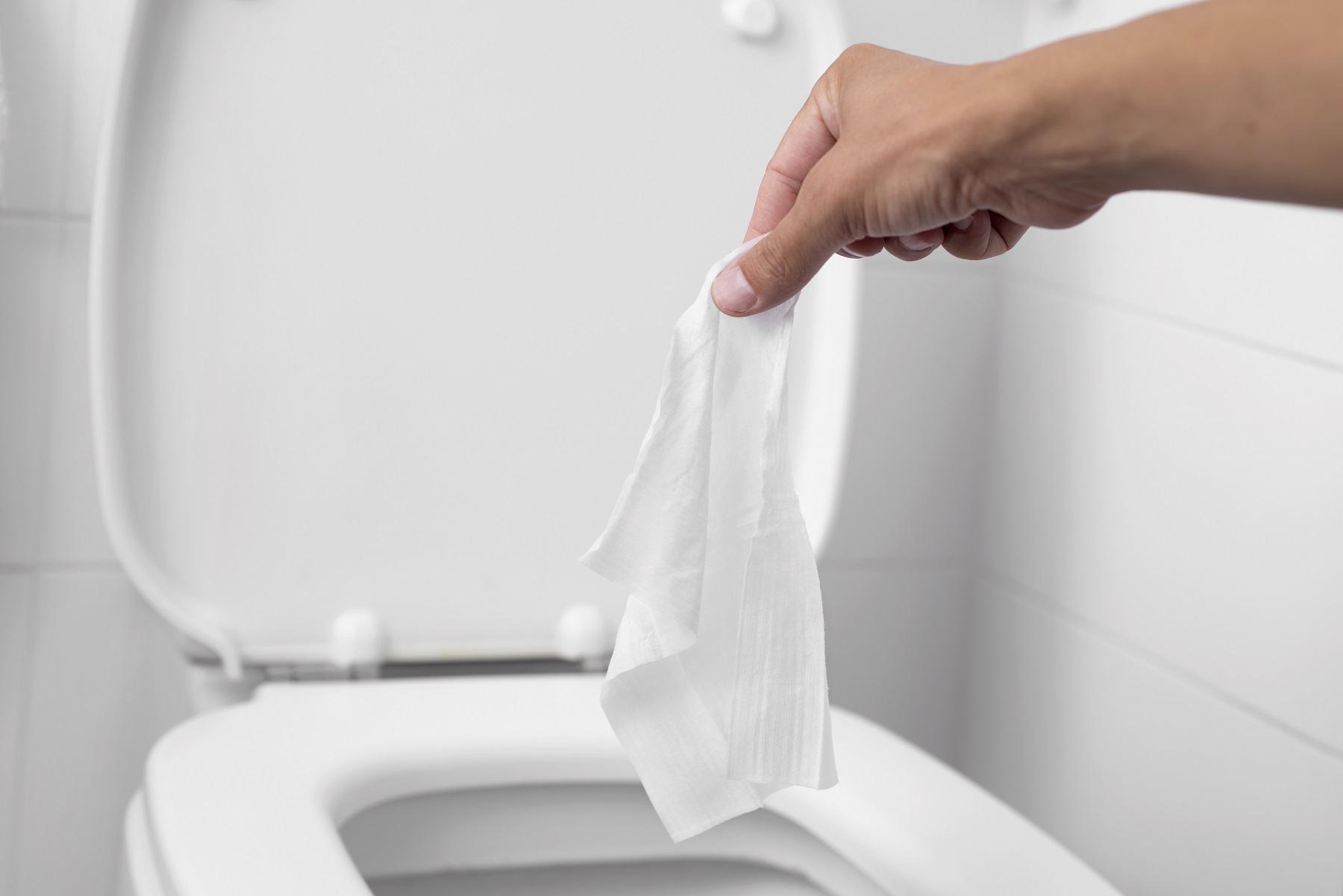Flushable Wipes and Bathroom Plumbing: What You Need to Know
Flushable wipes are all the rage when it comes to freshening up after using the bathroom. Sadly, many people toss these wipes into the toilet and flush them away. Yet, flushable wipes are not as friendly to your bathroom plumbing and sewer lines as you might think. Eventually, the wipes can build up in the plumbing lines and sewer lines, create a clog, and require a call to a 24-hour plumbing service.
Baby Wipes vs. Freshening Wipes

If you walk down the diaper and paper products aisle at your grocery store or big-box retailer, you will notice there are several options of baby wipes and freshening wipes. There are some key differences between the two products.
Baby wipes were never meant to be flushed down the toilet. Rather, they were meant to be used to clean up your baby and then tossed in the trash, along with the disposable diaper. Yet, some brands now say they are “flushable” and safe for plumbing. However, they are not. They are thicker than regular freshening wipes.
Most freshening wipes are marketed as “flushable,” “septic safe,” and “sewer system safe.” While they are thinner than baby wipes, they do not break down as fast as toilet paper. It can take years for them to start to degrade. Since they can clog up plumbing like baby wipes, they should not be flushed down the toilet either.
How Baby Wipes and Freshening Wipes Clog Bathroom Plumbing
You might be thinking that wipes are just small pieces of paper not much bigger than several sheets of toilet paper, so how could they possibly clog bathroom plumbing and sewer lines? When you flush the toilet, the toilet paper starts breaking down right away and falling apart into smaller pieces.

Wipes, on the other hand, remain as one solid piece. The sheets can get caught on elbows inside the plumbing and not fully move down the sewer line to your septic tank or city sewer system. Over time, the wipes start piling up until they create a big clog and cause your entire sewer drainage system to back up.
Even if the wipes make it to your septic tank or city sewer system, they can still cause problems. In septic tanks, they can block greywater drain lines and quickly fill up the septic tank, requiring more frequent service.
In city sewer lines, the wipes can block screens, find their way into pump motors, and cause all sorts of damage. While most people don’t think about the impacts after the wipes have left their home, the effects can result in higher city property taxes, wastewater bills, and so on.
How to Prevent Bathroom Plumbing Clogs from Wipes
The best solution is not to flush wipes down the toilet. However, if you always want to keep your bathrooms clean from wipes and enveloped in a pleasant aroma, you might want to have a Cleaning bundle for you. This bundle can provide bathroom cleaning liquids and fresheners. But, the question is still there, after cleaning the bathroom where should we put those wipes. You can get a diaper pail and place it next to the toilet. Toss your baby wipes and freshening wipes into the pail. Remove and tie up the liner and put it into your regular trash.
If you are guilty of flushing wipes down the toilet, you will want to call a 24-hour plumber for a sewer drain cleaning service to remove any wipes from the sewer drain lines. The process to remove wipes can take several hours, depending on the number of wipes you and your family have flushed down the toilet.
For sewer drain cleaning, clogged toilets, and other bathroom plumbing problems, please feel free to contact Christianson Air Conditioning & Plumbing in San Antonio, New Braunfels, Temple, or the Austin Metro area by calling 512-246-5400 today!
Tags: 24-Hour Plumber, 24-Hour Plumbing Service, Bathroom Plumbing



Sorry, comments for this entry are closed at this time.